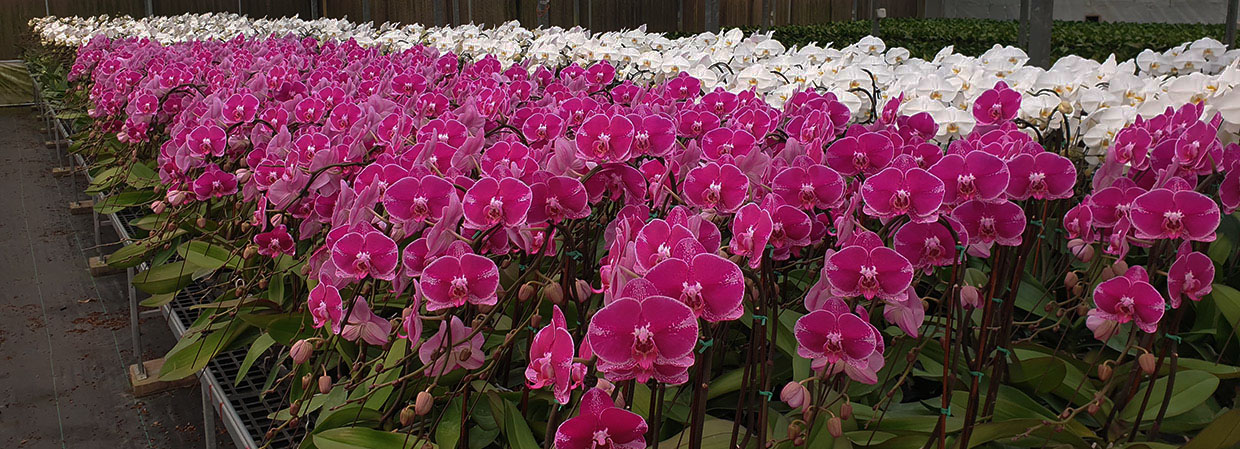Culture

CHINESE CYMBIDIUM CULTURE
These orchids are prized for the graceful shape of their leaves and delightful fragrance of the flowers. There are three main Chinese Cymbidium species; Cym. ensifolium ,Cym. sinense and Cym. kanran makino. Cymbidium ensifolium is a smaller plant with small, thick leaves that blooms in summer. Some of its varieties or forms, will flower three or more times during the summer months. Cymbidium sinense is a slightly larger plant and always has dark green leaves. It flowers in winter. Both C. ensifolium and C. sinense have variegated forms. The most common forms have a gold line on both sides of the leaves or have the variegation running down the veins of the leaves.
Temperature
Most of the Chinese Cymbidium are found at 1000 meter altitude forst. Growing temperature is the most critical factor in blooming Chinese cymbidiums. During the summer, Chinese cymbidiums should be grown under 90-95% shade, with temperatures from 75-85F. Higher temperatures may be maintained if increased air movement is provided. Night temperatures in late summer and early fall (August to October) must be 50-60F to initiate flower spikes. Optimum temperatures in winter are 45-55F at night and 65-75F during the day. Most Chinese cymbidiums can withstand light frost and survive, but this is not recommended, so do not allow the temperatures to drop below 40F. In mild climates they can be grown outside all year.
Light
Shade more heavily during the summer months (about 95%) and increase the air movement. Keep about 90% shade during the winter. The leaves should be a dark green color, not medium green or golden green.
Water
The plants should be watered about every three days. In very dry climates, water about every two days. The plants should remain slightly moist, but not wet. During summer, avoid watering during the hottest part of the day. Use a potting medium that dries out quickly, like rock and tree fern fiber ( see the picture below). Some sphagnum moss ( we use sphagnum moss, but understand this is not readily available in most other countries) may be placed on top of the medium to keep the plant moist but not too wet. A picture of the seaweed we use is pictured below.
Humidity
Humidity where Chinese cymbidiums grow is usually high. For best results keep the humidity at 40-60% during the winter. Higher humidity is recommended during the summer, if possible.
Fertilizer
We recommend a 15/15/30 Albion Laboratories ( a USA firm) fertilizer, applied by spray, three times per month. Increased phosphate may be provided during the summer months.
Potting
Chinese cymbidiums have very long roots, so deep containers are recommended. Slim deep containers are best as they restrict the roots. We have available some nice reasonably priced containers, ( see the picture below.) The medium we recommend was discussed previously under water, however, if tree fern fiber is not available the use fir bark is recommended. Potting should be done about every two years, as the potting medium begins to break down and turn sour. Re-potting should be done in the spring after flowering. Select a container that will allow for two to three years of growth before crowding the container. Carefully remove all the old potting medium from the roots. If you wish to divide the plant maintain 2-3 bulbs, with leaves, in each division. Place the active growing bulb furthermost from the side of the container. Spread the roots over a cone of the mix in the bottom of the container. Fill the remainder of the container with mix, working the mix carefully around the roots while tapping the container firmly to seat the mix. The rhizome should be about 1/2″ to 1″ below the surface of the medium. Supply limited amounts of water and keep shades until new growth starts,
By Michael Hsu, special thanks of Mr. Kenneth A. Roberts